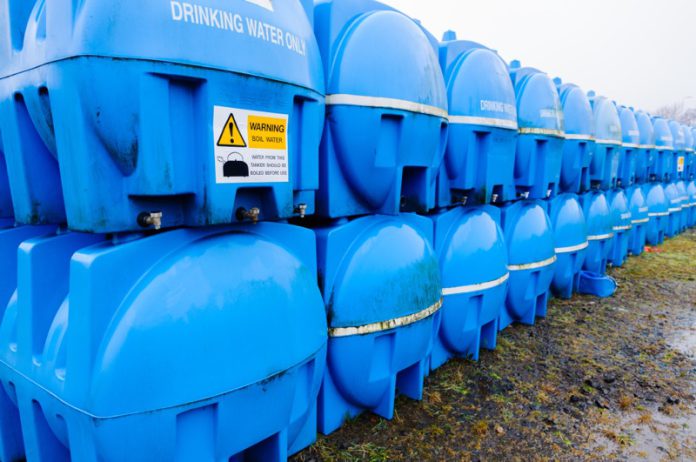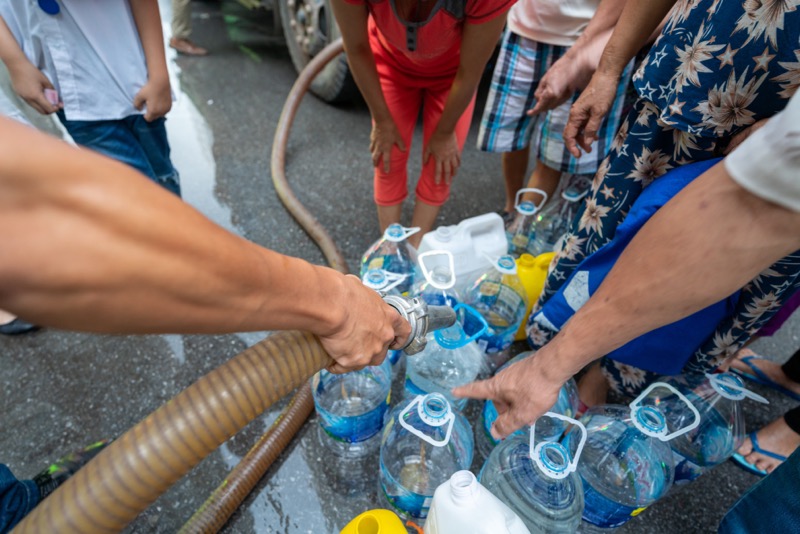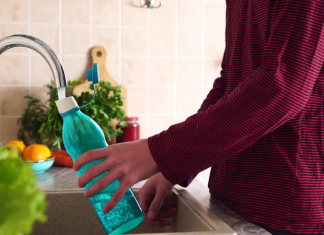
If you live in an area with an unsteady water supply, then collecting an emergency water reserve could ensure your family’s water security. This emergency water supply is useful during periods of natural disasters, droughts or water restrictions mandated by your local municipality to address water shortages in the community. The water supply can also be stored as preparation for possible natural or manmade fires that could threaten your property.
In any case, having a good volume of easily accessible backup water can give you peace of mind and keep you prepared for unanticipated events. If you’re going to reserve clean water, you’ll need to know how to properly manage your stock to maintain its hygiene and ensure safety for consumption and usage.
Here’s what you need to know about preparing and storing an emergency water supply.

-
Decide Where You’ll Store The Water
The most reliable means of storing water for the medium to long term is by using a storage tank. These home water tanks can be installed via piping and adjacent to your home’s municipal primary water system. They are also used to collect and harvest rainwater that can be filtered and used in the event of a water shortage.
Alternatively, if you can’t get a water storage tank or you need to store water given the short notice, consider portable containers like these water transport tanks. They can be used to transport a larger volume of water to your home or supply an entire neighbourhood during water shortages. The water obtained from the transported tanks can then be used to supplement your home water supply.
From here, once you have the water delivered to you from a transport tank, you’ll need to get the water into containers for storage. An ideal option is to use clear and large plastic bottles either used or store bought. As much as possible, these containers should be food grade.
Used bottles that contained milk or fruity drinks won’t be suitable for water storage as they have bacteria and other substances that cling to them. Moreover, containers used to hold toxic chemicals such as bleach and pesticides should not be considered as an option.
Whatever you choose, make it a point to sanitize your container with a simple bleach solution before using them to kill off germs and bacteria.
-
Sort Water Into Usage Portions
This is more of a safety precaution to protect your household from drinking water that’s unsafe or chemicalised. Sorting your water out into its specific uses can avoid such mix ups and even prevent emergency water supply shortages.
Once your stored water is bottled up and containers are properly sealed, you’ll need to label what each container will be used for, indicate a storage date, and group them accordingly. For example, this can be labelled as cooking, cleaning, flushing toilets, and washing hands. As a key tip, ensure that the drinking water group counts as the largest volume especially during an emergency as it’s the most important necessity of them all.
If you’re storing your water supply in a singular tank, then you can use a ladle spoon or jug to scoop the water out. Make sure whatever you use has been cleaned and sanitized with bleach to avoid contaminating the rest of the water supply. Additionally, try not to touch the water with your hands either to maintain its sterilised form.
-
Choose A Suitable Storage Location
Once you’ve gotten portable water delivered and placed either into a water tank or water bottles, you’ll have to keep it clean and fresh.
To keep the emergency water stored for a long period of time, keep the containers in cold, dry, and dark areas of your home. This can be in your garage, laundry room, behind a washing machine or refrigerator, if there’s enough space.
If there are no adequate areas to keep the stored water cool, then a location that has room temperature will suffice. An important tip to remember is that storing water away from direct sunlight is also a means of making it last longer. Thus, you should avoid windows and do not place them outside of your home or in open areas, especially if you opt to use plastic bottles.
Conclusion
Preparing and storing an emergency water supply for your household or local area is a surefire way to have ample supply so you and your family can manage through during an emergency. The tips above are just some of the ways that can guide you so you can make the most out of your scarce resource.
Remember, when preparing and storing your supply, retaining the water’s cleanliness will be a vital task for you to maintain its usage. Aside from this, taking steps to make your water potable or safe to drink is a must.














